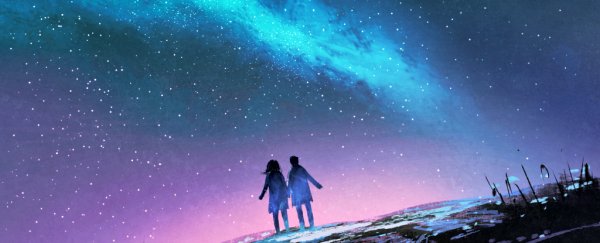Lately, it feels like every day we're flooded with stories about the worst of humanity - wars, school shootings, climate change.
It makes it easy to forget that, as a species, we can actually be pretty amazing.
Here are some beautiful facts, images, discoveries and stories to remind you that nothing is as bleak as it seems, and that humans can do some wonderful things, especially when we put our minds to it.
1. Some people can identify scents as easily as you distinguish colours
Scientists have discovered two hunter-gatherer populations living on the Malay peninsula in Asia that have abstract names for smells - similar to names like 'yellow' or 'blue' - and they're able to name odours as easily as English speakers identify colours.
In general, humans have a pretty good sense of smell.
But most of us struggle to properly identify scents - instead of being able to abstractly name smells, we refer to scents based on what they remind us of.
For example, cheese that smells of smoke, or trees that smell like peppermint - for the most part, scents are unnameable.
The fact that some hunter-gatherer populations have that ability to name scents is super impressive.
2. Humans can learn to echolocate, just like bats and dolphins
We're used to seeing bats and whales use echolocation to find their way around. But what you might not know is that, with practise, humans can also visualise their surroundings by making clicking sounds - similar to the way the blind comic book character Daredevil 'sees'.
The most famous 'real-life bat-man' is Daniel Kish, who lost his sight at the age of one. Kish became an internet sensation - climbing mountains, riding bikes and living alone in the wilderness using mouth clicking skills to picture his surroundings with mind-blowing accuracy.
But science shows it's not only the visually impaired who can learn to echolocate. In a 2017 study, researchers taught 11 sighted people how to use echolocation to judge the size of their room - and it was surprisingly simple.
3. We've managed to isolate, trap and photograph the smallest units of matter that we know of
That tiny blue pinprick of light in the centre of the image is a single, positively-charged strontium atom, suspended in motion by electric fields.
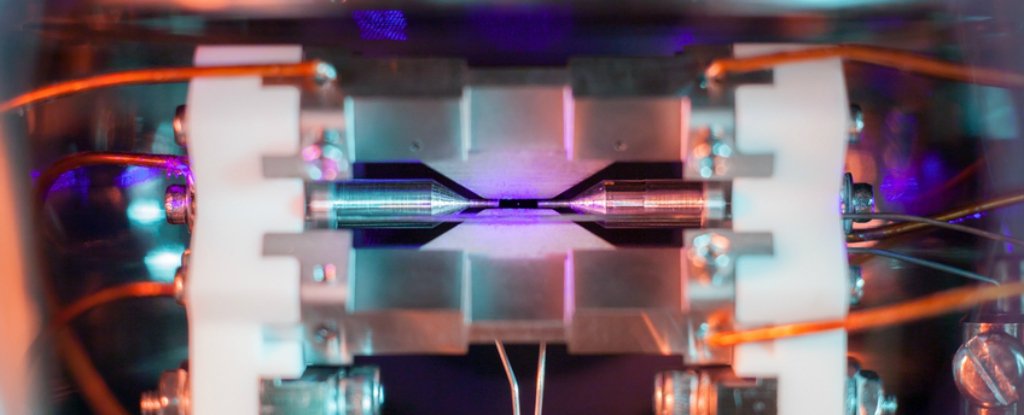 (David Nadlinger/University of Oxford)
(David Nadlinger/University of Oxford)
Here's a closer view. Just look at it:
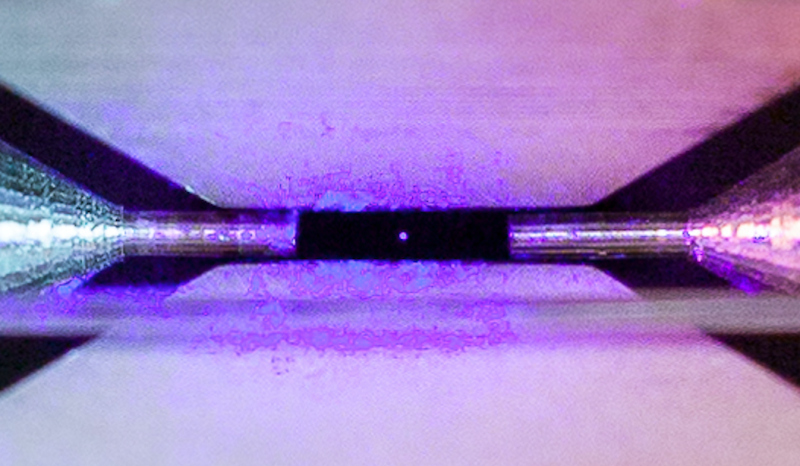 (David Nadlinger/University of Oxford)
(David Nadlinger/University of Oxford)
This breathtaking image was captured by physicist David Nadlinger at the University of Oxford and won the overall prize in the UK's Engineering and Physical Sciences Research Council photo competition.
To give you a little perspective on the size of this set-up, the atom is being held in place by electric fields emanating from those two metal needles on either side of it.
The distance between them is about 2 millimetres (0.08 inch).
4. We can also capture images of Earth from 40 million miles away
Here's another photo of a tiny luminous dot. But this one is our home planet.
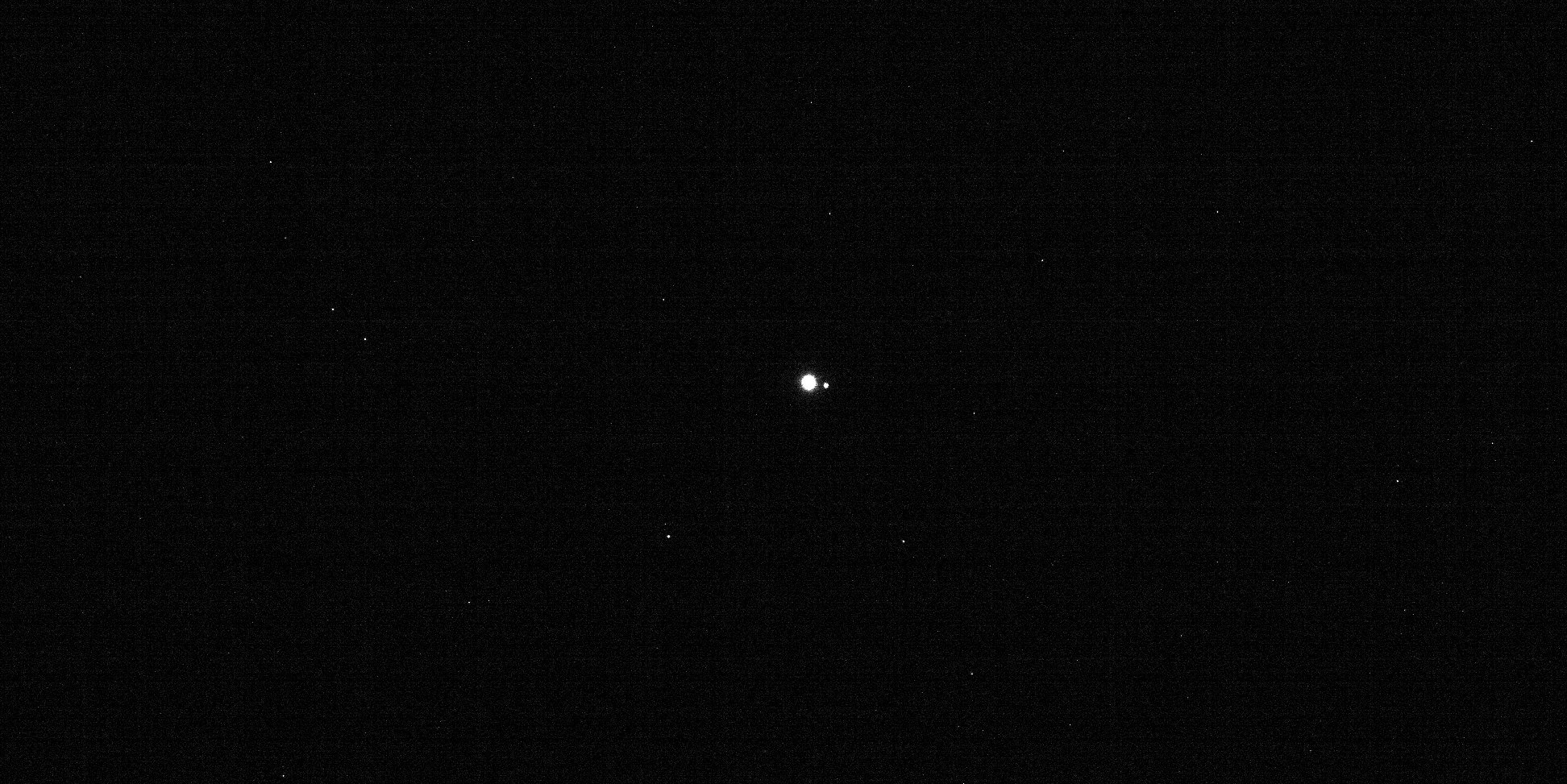 (NASA/Goddard/University of Arizona/Lockheed Martin)
(NASA/Goddard/University of Arizona/Lockheed Martin)
Yes, that's every single person you've ever met or will meet (and a few billion more) all in one image - plus the Moon to the right.
All of us are reliant on that little speck of light in the darkness for our very existence, and that certainly puts your issues into perspective, doesn't it?
The image was taken by NASA's asteroid-sampling spacecraft OSIRIS-REx as part of an engineering test on 17 January 2018.
5. This teenager invented an app that diagnoses eye disease as accurately as a doctor
One of the unfortunate complications of diabetes is that the blood vessels in the retina can become damaged, leading to diabetic retinopathy (DR) - the leading cause of preventable blindness in the world.
Screening and early diagnosis are crucial for treating this problem, but more than 50 percent of all cases go unnoticed.
So at the age of 16, Kavya Kopparapu, whose grandfather in India was diagnosed with DR, invented a simple, cheap new screening tool for it called Eyeagnosis.
Her solution? To develop a smartphone app that can screen for the disease with the help of a specially trained artificial intelligence program and a simple 3D-printed lens attachment.
Early studies show it's already as accurate at diagnosing DR as a doctor, which means patients can start to get help quicker.
Neuroscientists have discovered a woman who has an extra type of cone cell - the receptor cells that detect colour - in her eyes.
According to estimates, that means she can see an incredible 99 million more colours than the rest of us, and the scientists think she's just one of a number of people with super-vision, which they call "tetrachromats", living amongst us.
Most humans are trichromats, which means we have three types of cone cells in our eyes and can distinguish around 1 million colours. But tetrachromats have four types of cone cells, and can see up to 100 million - colours most of us have never dreamed of.
It's thought that the extra cone cell is passed down from colour-blind men who contain two normal cone cells and one mutant cone that's less sensitive to either green or red light. The female descendants of these men could inherit the extra cone cell on top of their three normal cones.
While only one person in the UK has been confirmed as a tetrachromat, researchers think there are more out there. In fact, some scientists estimate that around 12 percent of the female population should be tetrachromats. They might not know they're special.
7. We've created a sponge-filled injection that plugs bullet wounds
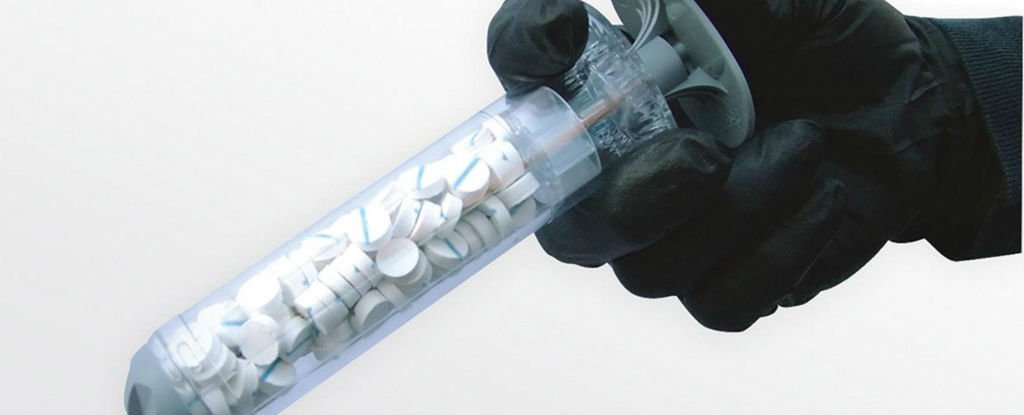 (RevMedx)
(RevMedx)
For years, scientists have been working on a sponge-filled injection that is capable of plugging gunshot wounds and stopping bleeding in 20 seconds flat.
The technology was cleared by the US Food and Drug Administration (FDA) in 2014 and it's already saved lives on the battlefield.
Known as XStat, the injection is filled with tiny cellulose sponges that are made from wood pulp, and coated in a coagulant and an antimicrobial called chitosan, which comes from crustacean shells.
When they come into contact with blood, the sponges rapidly expand to 10 times their original size and swell to fill the wound cavity in about 20 seconds - allowing doctors to stabilise and perform surgery on the patient if necessary.
8. This 6-year-old cares about Pluto so much she heckled NASA
We all miss our favourite planet Pluto, but six-year-old Cara Lucy O'Connor from Ireland is so upset about it, she wrote this adorable letter to NASA, and it restores our hope in future generations of humans.
"I really think Pluto should be a main planet again like Mercury, Venus, Earth, Mars, Jupiter, Saturn, Uranus & Neptune, because in one video I watched called 'Let's go meet the planets,' Pluto was at the very end," she wrote.
In another video, she said, Pluto "was put in the trash can and was scared by planet Earth."
"This was really mean," Cara wrote, "because no one or no planet or dwarf planets should be put in the trash can."
James Green, director of NASA's Planetary Science Division, replied:
"I agree with you that Pluto is really cool - in fact, who would have believed that Pluto has a heart? … It's a fascinating world that appears to be constantly changing. To me, it's not so much about whether Pluto is a dwarf planet or not; it's that Pluto is a fascinating place that we need to continue to study."
9. Although you might feel stuck in a rut, science shows your personality is always changing
Multiple long-term studies have shown that, just like our bodies change as we age, our personalities change too.
That might not sound very incredible, but when you really think about the fact that you're not the same person at 14 as you are as 77, it's actually kind of exciting.
For anyone who's not happy with where they are at right now, it means there's hope and change on the horizon. And if you love yourself just as you are, things are just going to keep getting better.
Life may be short, but it would be pretty boring if we never moved forward.
10. Scientists have figured out how to reverse memory loss in Alzheimer's
While researchers are making great progress reversing Alzheimer's symptoms in mice, a small trial in humans has also shown a way that memory loss can be reversed in humans.
The trial involved 10 patients, and some of them were able to return to work, regained their ability to speak different languages, and showed an increase in brain matter volume after just a few months.
Each of them were given a personalised treatment called metabolic enhancement for neurodegeneration, or MEND.
It's based on 36 different factors, including changes in diet, exercise, and sleeping habits, plus the integration of certain drugs, vitamins, and brain stimulation therapy to their regular routine.
These lifestyle changes and treatments were sustained for five to 24 months, and the team from UCLA and the Buck Institute for Research on Ageing in California reports that many of the patients showed real, life-altering improvements as a result.
11. Scientists have made a device that sucks fresh water out of thin air
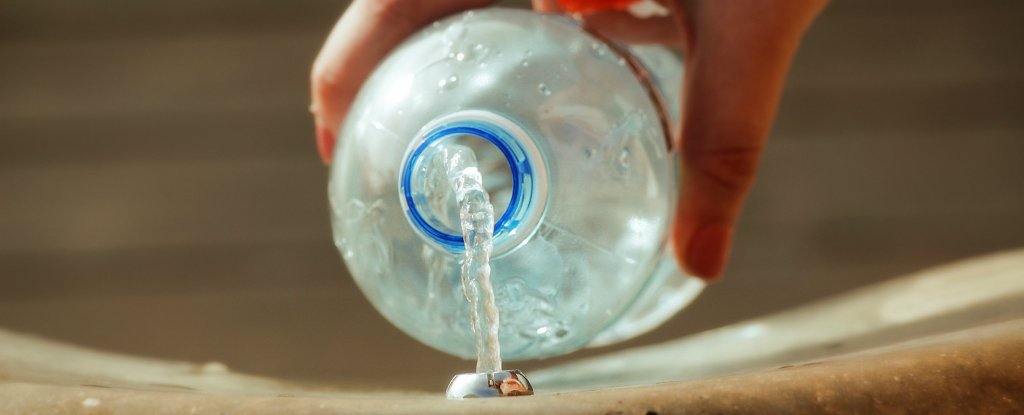 (Wave_Movies/Shutterstock)
(Wave_Movies/Shutterstock)
Researchers have created a device that aims to solve water shortages by literally sucking water out of thin air. Without any electricity needed.
The 'solar-powered harvester' just needs sunlight, and it's capable of pulling fresh water out of the air, even in places with humidity as low as 20 percent.
It uses a special type of material known as a metal-organic framework (MOF) and so far is only in the prototype phase. But the results so far are promising.
12. We have found a way to turn excess CO2 in the atmosphere into plastic
We all know there's too much carbon dioxide in Earth's atmosphere, heavily contributing to a warming planet. But now scientists have come up with a new plan - turning excess CO2 into plastic by using a chemical reaction that turns carbon dioxide into ethylene.
Plastic isn't the most environmentally friendly of materials, but as a society we're still pretty dependent on it.
Creating plastic from excess CO2 would not only suck carbon dioxide out of our atmosphere, it could also reduce the need to produce plastics out of fossil fuels, giving us a better chance of hitting targets for limiting climate change.
13. Vaccines have saved nearly 20 million children's lives since 2001
Enough said. This is just brilliant.
14. When you count all the protein molecules in a simple cell, the answer really is 42
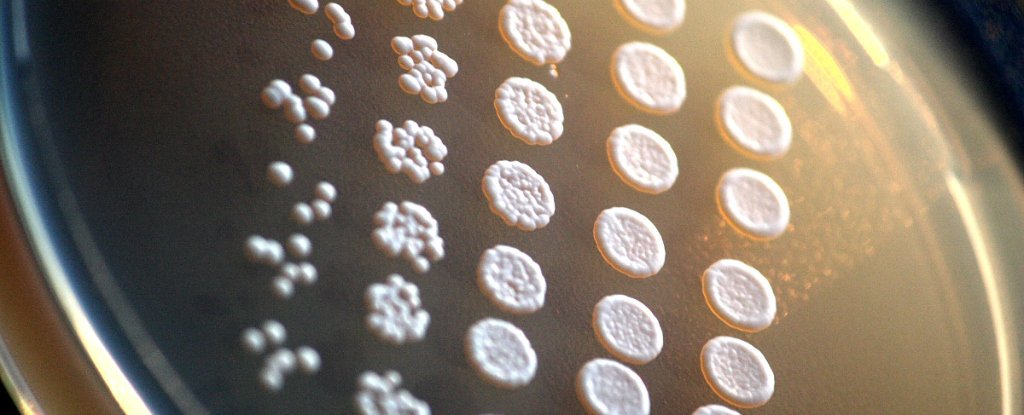 (Rainis Venta/Wikimedia)
(Rainis Venta/Wikimedia)
Douglas Adams might have been onto something when he wrote that the meaning of life, the Universe, and everything is 42.
Biologists have recently counted all the protein molecules in a single cell - something they've been struggling with for decades - and found that the number is 42 million.
Okay so we might be stretching the Adams link a little bit here. But it's pretty inspiring to think that in addition to literally being made of star stuff, we all contain the answer to the meaning of life within our very cells.
Be bold, humans.
